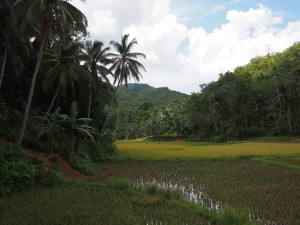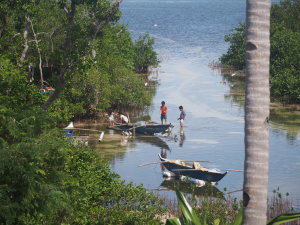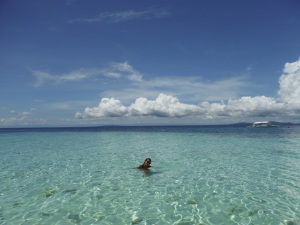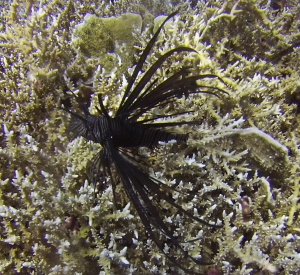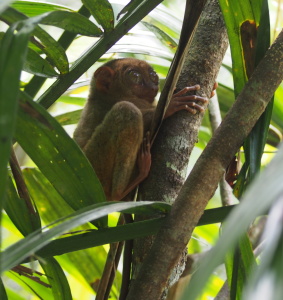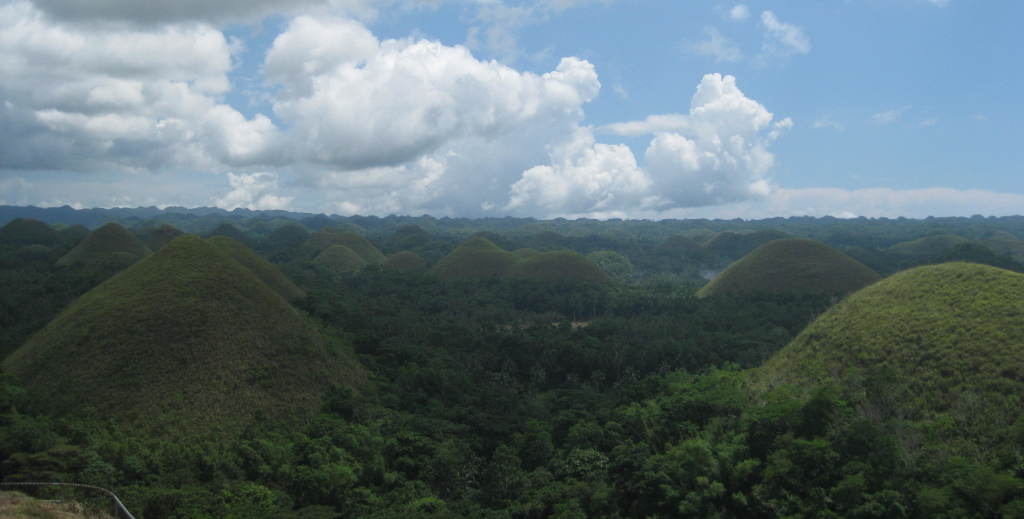We enjoyed our time on Moalboal, diving and on land with Cebu Dive Centre. When it was time to move on, we caught an early bus back to Cebu City, ran a few errands, and then grabbed a ferry (full-sized this time) to Bohol, an island province located in the Philippines’ Central Visayas. Bohol features one reasonably-sized city, Tagbilaran, and is known for its tarsiers (more on those in a moment), its chocolate hills (those too) and the diving on Panglao Island, connected to much-larger Bohol by bridge.
We landed in Tagbilaran, caught a rickshaw over to Panglao in a downpour, and rented a motorbike. We explored the (too) busy stretch of Alona beach full of touts, restaurants, and the like before settling on Equation Dive Centre, a dive shop in a slightly more secluded area. We did two days of diving there on Balicasag and Pamilican islands, which were beautiful– gorgeous corals and tons of turtles.
We came to Panglao for the diving but reserved a day to explore Bohol on our motorbike. It’s a generally scenic island, with lots of rice paddies, but its main attractions are the tarsier sanctuary and the chocolate hills.
Tarsiers are crazy little creatures. They have enormous eyes, as you can see, and while they can’t move them, they compensate by turning their heads roughly 180 degrees. This is pretty creepy. They’re also tiny– roughly the size of an adult’s fist. And they’re rare: According to a pretty dubious Wikipedia article, there are only about 700 left on Bohol, due to forest clearing and the illegal capture of tarsiers for pets. We visited a sanctuary run by the Phiippine Tarsier Foundation, where a keen-eyed guide took us on a walk through a huge forest preserve and pointed out a few tarsiers perched high in the trees. There’s also a small, somewhat perfunctory educational center. It’s pretty basic, but definitely worth a stop just to see the little guys.
Our tour de Bohol didn’t stop with the tarsiers. We continued across the island to the so-called Chocolate Hills, an enormous area featuring more than 1,000 similarly sized, generally symmetrical grass-covered limestone mounds. In the dry season, the grass turns brown, and some branding genius ran with that. When we were there, the whole place was lush and green, but that didn’t stop people (including us) from climbing up to an overlook area to take a look. It’s a little hard to capture in photos, but it was actually fairly interesting and definitely unusual looking. We met some friendly locals along the way who wanted to take photos with us, which has been a theme of the trip– we might feature in facebook albums the world over.
We continued our Bohol wanderings for a bit longer, before getting caught in a series of crazy downpours that made our motorbike trip home an interesting one. We were grateful for Bohol’s other, more unsung tourist attraction: covered markets, bus stops, and tiny roadside restaurants available for soaked travelers to take shelter along the way.

